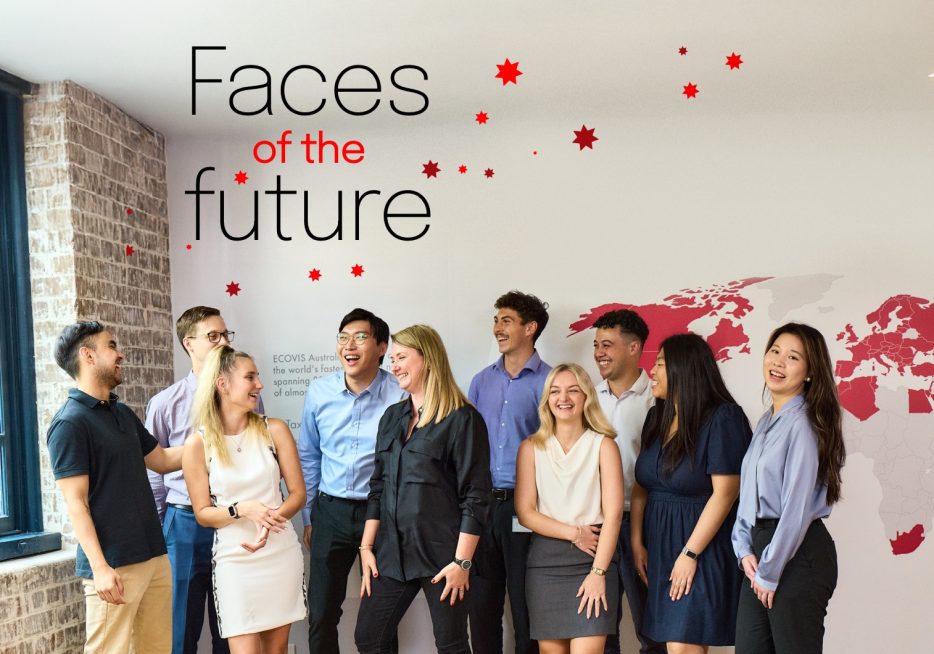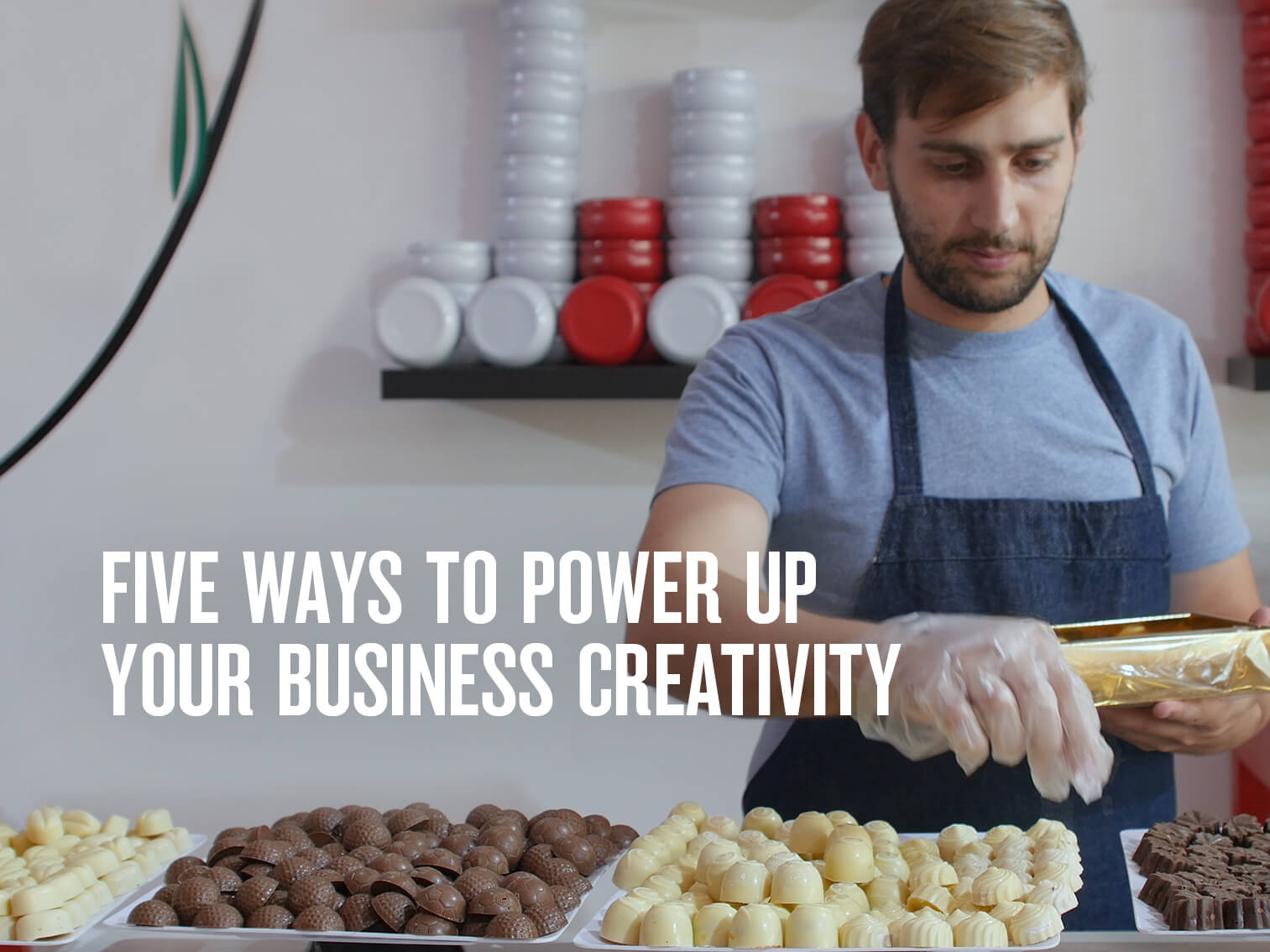Having passionate young professionals on the team is proving a powerful differentiator for Ecovis director Elissa Lippiatt.


Video
Unleashing your creative side can help your small business thrive. Our expert tips show you how.

“You should work on your business, not in your business.” It’s a saying well known to many small business owners. The difficulty – when you’re deep in the operational weeds – is living up to it.
One way you can do so is to tap into your, perhaps hidden, creative side to uncover ideas for doing things better, smarter, cheaper or just plain differently.
To help you unleash a creative and innovative mindset – one which encourages, identifies and actions good ideas – we turned to organisational psychologist Amantha Imber, founder of Melbourne-based behavioural science consultancy Inventium, and intellectual property lawyer Malcolm McBratney, partner at Mills Oakley. Here are their top five tips.
What if everything you thought you knew about your customers – and the industry you operate in – was wrong? We all make assumptions about the way the world works but, when it comes to creative problem-solving, they can be an impediment. Identifying then crushing erroneous assumptions can help you develop more innovative solutions to customer issues, rather than becoming locked in on the ‘obvious’.
False hypotheses are a classic blocker to fresh thinking, Imber says.
“Assuming, for example, ‘I need to solve this problem with X number of dollars’ or ‘This is how it’s always been done in my industry’ can stop you coming up with novel ideas,” she says.
“Thinking creatively means asking yourself, ‘What if the opposite were true?’ and then using that new reality as a springboard.”
Do you think of yourself as a businessperson – ‘a suit’ – first and foremost? Well… you are. But you’re also effectively what the ad industry calls ‘a creative’.
Creatives’ jobs involve bringing together unconnected ideas to develop new solutions. It’s not just designers or writers who do this – every business person can be about connecting ideas to solutions.
Building habits and rituals around such creative thinking can help you develop the kind of mindset primed to come up with your own bright ideas to improve your business, particularly if you’re normally prone to focusing heavily on operational issues, Imber believes.
In practical terms, that might mean setting aside a couple of hours each week to step away from the day-to-day grind and let your mind wander. This creates an opportunity for any ideas running around in the back of your mind to incubate and percolate; something that’s unlikely to happen when you’re immersed in regular responsibilities, Imber says.
It also pays to remember that a good idea can come at any time, from any member of your team. And these are more likely to be shared if you foster a culture that acknowledges and welcomes them, whether that be through regular, formal brainstorming sessions or casual catch-ups where freewheeling thought is encouraged.
You might think you know what makes your customers tick, but how well do you know them really? In business, the most valuable ideas are those which solve a customer’s, or potential customer’s, problem. But unless you’ve walked the proverbial ‘mile in their shoes’, can you hope to understand their challenges and frustrations?
Making site visits, staging customer events, conducting surveys and analysing reviews will give you opportunities to ask your regulars about the things that are making their lives difficult.
“The best innovation starts by addressing those issues and finding ways to manage the pain points that continue to recur,” Imber says.
The best idea in the world is of zero value until it’s put into action. That’s where some business owners come unstuck, according to Imber.
“We see people come up with lots of ideas, but they don’t implement anything, often because they feel overwhelmed and paralysed about how to proceed,” she says. “Being clear about which idea will solve your most important customer challenge should help you prioritise how you invest time and resources.”
Going ‘all in’, without testing an innovation on real customers first, is another common pitfall.
“So many people fall in love with an idea and get really attached to it,” Imber observes. “They miss the feedback they’re getting and keep investing more and more money to try to make it work when it’s clearly not resonating with their customers.
“If you think an idea has legs, design a quick, lean, cheap experiment to test your key hypothesis around why it should be successful – don’t just go forth and bet the house.”
A great idea can be worth a great deal of money – to you and your business. If you’ve designed or invented a new product or process, you should consider whether you need to protect it by applying for a patent or design right in Australia and overseas. Or you may decide you’re better served if your useful idea can be kept truly secret, and for how long.
There are risks and benefits to both approaches. This is where it makes sense to invest in professional advice from an IP lawyer before deciding which way to proceed. Choose someone with specialist knowledge of your sector or industry, advises IP lawyer Malcolm McBratney, partner at Mills Oakley.
“Patents are extremely complicated and you’d generally want, for example, a patent attorney with electrical engineering qualifications working on your electrical invention, not one qualified in microbiology,” he says.
While they’re doing so, it’s vital to keep your idea or product under wraps.
“If an invention is commercialised or publicised before a patent application is filed, your patent is technically not ‘novel’ and is therefore invalid,” McBratney explains. “That’s why we generally suggest entering into confidentiality agreements with any third parties prior to discussing the invention with them, and getting a provisional patent filed as quickly as possible, before you start publicity, production or sales.”
And if you’re engaging a third party to develop something for you – whether it be a new product or process, some plans, a logo, software or something else – it is vitally important that you have an agreement in place, before work starts, that assigns the resulting IP to you.
“If you do not, that IP you’ve paid to develop will actually still be owned by the party you engaged to develop it,” McBratney warns.
4 more idea generators
According to philosopher and author Edward de Bono, “an idea that is developed and put into action is more important than an idea that exists only as an idea”. Here are some more tips to help you action your own great thoughts.
As Australia’s biggest business lender,^ NAB can support, fund and build on your ideas. Every business owner deserves support from NAB Business Experts with the same kind of fierce dedication and focus you have.
© National Australia Bank Limited. ABN 12 004 044 937 AFSL and Australian Credit Licence 230686.